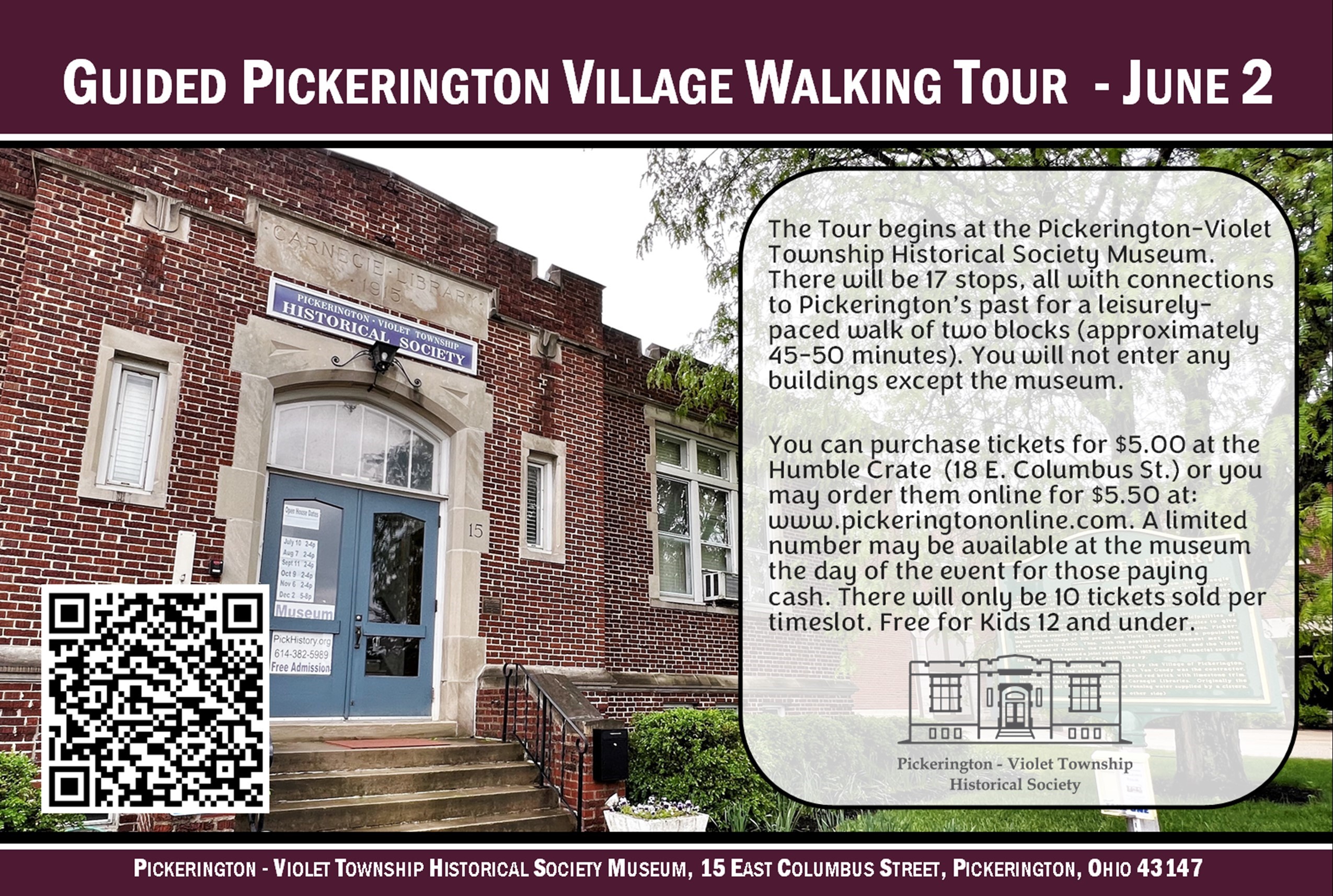
Photo by Heath Scofield
April 25, 2022
Over the past month, the effort by Pickerington Local School District administrators to draft a new bond issue for the November 2022 ballot has “picked up in intensity”.
With overcrowding a major issue for the district (half of the 14 buildings will exceed capacity within five years and Pickerington Central High school has already exceeded its limit by over 300 students), officials are continuing to explore all options to alleviate overcrowding, including a November 2022 bond issue to construct new facilities.
The district tried twice previously to pass a bond issue – November 2020 and May 2021. Had either passed, the 2.9 mill bond would have generated $95 million to build a new junior high school, add classrooms to both high schools and upgrade athletic facilities (including a new football stadium for Central).
The owner of a property with an appraised value of $300,000 (therefore an assessed value of $105,000) would have paid $101.50 per year, or $8.46 per month. (A mill equals $1.00 for every $1,000 of assessed value.)
Although specific details have not been announced, needed district capital improvements will still include the construction of a new junior high as well as new wings of classrooms for both high schools. The projects will be funded by an anticipated November 2022 bond issue in combination with the generation of permanent improvement funds via board action on February 28 which transferred operating millage.
The proposed projects do not include a third high school.
“If anyone in the community were to ask ‘Why aren’t you considering a high school? There are many reasons,” District Treasurer Ryan Jenkins said. “Cost is a great big one but where would you put it? We don’t have the land. If you tried to build a third high school right now, at these costs per square foot, the size of North, that’s a $170 million bond issue all by itself.”
Based on community feedback, some facilities included in the earlier ballot attempts will not be part of the new bond issue.
“We were basically given the charge to find a different way to attack some of those projects and so that’s what we will do,” Jenkins said.
New High School Entrances No Longer Part of Bond Issue
The first items to be removed from the bond issue are the new entrances to both high schools. These improvements are now being funded by the Federal government as part of COVID-19 relief programs (specifically, the Elementary and Secondary School Emergency Relief Fund, including the American Rescue Plan (ARP ESSER) program of the United States Coronavirus Aid, Relief, and Economic Security (CARES) Act.)
Secure vestibules will be added to the entrances to both high schools. Guests will enter the first set of exterior doors, then wait in the vestibules until office staff grant them access to enter the buildings.

Photo by Heath Scofield
“This will stop visitors from getting into the first set of exterior doors which now gets the visitor full access to the building without going through the office area (somebody getting in those doors can get through the vestibule, through the second set of doors and then go right into the flow of hallway traffic to access the rest of the building),” Jenkins said.
Originally, the estimated cost for the vestibules was $500,000-$750,000. But given tight construction labor markets, supply chain shortages, other massive local projects like Intel and Google and other recent disruptions to the construction industry, the district now estimates the vestibules will cost closer to $1,250,000.
Accounting Change Allows for Projects to be Removed from Bond
In any given area, there are 10 mills of property taxes which are automatically assessed and never need to appear on a ballot. These 10 mills are split between the local governments which serve a given property. So, for a property in downtown Pickerington, the inside millage would split between Fairfield County, Violet Township, the city of Pickerington and the PLSD. The school district’s part is roughly 4.5 mills.
At their February 28 meeting, the school board members unanimously voted to dedicate 0.5 of those inside mills to construction and maintenance of district facilities.

“Currently, 100-percent of the 4.5 inside mills we assess right now support the General Fund, (but) in transferring between $500,000 and $1,000,000 to Permanent Improvement funds, we are in essence transferring the equivalent of the same amount of money each year,” Jenkins said. “So, moving forward, the 0.5 inside mills will generate about $800,000 per year for the Permanent Improvement fund; while this also means that this $800,000 will not be receipted to the General Fund, we also will not transfer $500,000 to $1,000,000 either, which makes the whole transaction nearly a ‘wash.’”
The district intends to select projects to now be funded through the millage move rather than a bond (for example: additional classrooms; turf at Tiger and Panther Stadiums; additional capital expenditures at the new stadium on the McGill property like home bleachers, concessions; softball hub and auxiliary field lighting at North, et cetera).
In a 2021 poll conducted by the District using a professional researcher, 58.2-percent of respondents noted that they thought it was ‘bad idea’ to include as part of a bond issue the construction of a new softball complex at North, the completion of the stadium at Central, and the addition of synthetic turf to both Tiger and Panther Stadiums.
“The transfer of inside mills to the Permanent Improvement funds will also mean that the proceeds for the Permanent Improvement fund will grow over time (inside mills are not subject to tax reduction factors, so as our district property value grows, so will these Permanent Improvement revenues), which will allow us to identify future projects to help us deal with growth–but keep in mind these projects would be in the $5 million to $10 million dollar range like classroom additions–the amount of money generated would NEVER be enough for an entirely brand new school building, so the bond issue will still be needed to deal with our growth right now,” Jenkins said. “Additionally, for future years, we will identify existing projects that are spent from the General Fund (typically maintenance/upkeep like paving parking lots, upgrading HVAC equipment, painting, new carpeting, replacing tile, roofing, et cetera) and make sure we budget them to our Permanent Improvement funds.”
Construction Costs Have Increased
“Unfortunately, since we were last trying to go on the ballot, interest rates are going up,” Jenkins said. “The worst part about it is the Fed is forecasting as many as six additional rate hikes between now and the end of 2023.”
“The other issue is the supply chain – just the general difficulty in construction projects right now. When we tried to do this project back in 2020, new construction was $250-$300 per square foot. It is now pushing $337 to $350 per square foot with some projects as high as $400 per square foot, so the costs are increasing for any construction project.”
State Funding for Future Projects
The district is confident that if voters approve a bond issue in November, the Ohio Facilities Construction Commission (OFCC) will award them funds for added improvements.

“I’ll say this as many times as I can,” Jenkins said, “if we pass the bond issue and we have a project with the OFCC, we will have future funding and not just a little bit. If we would have passed a bond issue in May of 2021, we would have had a contribution of $53 million from the OFCC for future projects.”
Pickerington schools has received this funding in the past. After voters approved a 2006 bond issue to construct Sycamore Creek Elementary, Toll Gate Elementary and Toll Gate Middle School, the OFCC granted PLSD about $52 million in additional funds which the district used to update Central High School, Ridgeview Junior High, and three Elementary Schools (Fairfield, Pickerington and Violet).
Procedure for Placing an Issue on the Ballot
“There’s basically four things that you ask an auditor for when you’re asking for a bond issue and three of the four you really don’t know so you have to pick an estimate,” Jenkins said.
The known item is the maximum maturity of the bonds. That is a calculation that is a weighted average using the cost of the particular improvement and the expected life of the improvement.
An example is as follows: Suppose the bond issue is for $100 million, and $80 million of the bonds (or 80-percent) will be used for buildings which have a useful life of 40 years; the other $20 million (or 20-percent) will be spent on improvements like equipment that have a useful life of 10 years. The maximum maturity would be calculated as (80-percent x 40 years) + (20-percent x 10 years) = 34 years. So, no bonds could be issued that have an amortization period (repayment period) of longer than 34 years.
To place the bond issue on the ballot, the school board must pass a Resolution of Necessity, which requires an estimated interest rate. That estimate must be made at least 120 days in advance of the actual election yet during that time rates could change substantially.
The auditor also uses the district’s taxable valuation, but the 2022 valuation will not be final until November, so the numbers must be based on those from 2021.
But Jenkins noted, “assuming the bond issue passes, it is the 2022 valuation that will ultimately be the value that determines what the district collects for its debt service payments (beginning in January of 2023).”
Lastly, the auditor also requires an amortization schedule that assumes the repayment of principal in level payments. So, the auditor takes the total debt and breaks it into 30 equal installments.
Jenkins described this requirement as “absurd” but required by law.
“Everyone who’s bought a home knows that “you’re paying a lot more in interest up front than you are in and by the time you’re on the back end of the mortgage, you’re paying far more than you are interest. That’s how debt issuances are structured. They’re not going to be structured in such a way that you have level principal. It just doesn’t work that way, and yet that’s the assumption that the law creates.”
Jenkins, the entire PLSD finance team, the district’s municipal advisor and its bond counsel, and its underwriter will meet with Fairfield County Auditor Carri Brown on April 28 to discuss the structure of debt and what actually needs to be collected if a bond issue passes.
Jenkins recommended that on April 25 the board approve a Resolution of Necessity to place the bond issue on the November 8 ballot. The Board asked Jenkins to update its members about the discussions with the Fairfield County Auditor prior to the passage of a Resolution of Necessity, meaning the Resolution will most likely not be heard until the May 9 school board meeting.
Status of Previous PLSD Bond Issues
At Diley and Harmon Middle Schools, there is an outstanding principal balance of about $1,335,805. This will be paid off (assuming no refunding) by December of 2025.
For Pickerington North and Lakeview Junior High, there is an outstanding principal balance of about $30,359,195, which will be paid off (assuming no refunding) by December of 2026.
At Toll Gate Elementary, Toll Gate Middle School, and Sycamore Creek Elementary, the outstanding principal balance is about $33,175,000, which will be paid off (assuming no refunding) by December 2034.
More Information on PLSD Overcrowding
Even after voters approve a bond issue, the overcrowding will remain an issue for three or more years while the new classrooms are built. In the meantime, the district will enact other measures to control the crowding.
Possible short-term solutions include redistricting school boundaries and returning to a hybrid schedule. For more information please read: PLSD Considers How to Alleviate Overcrowding.
To learn more about the impact overcrowding has on learning, please also see: A Student’s View to Overcrowding.




















